

Season Magazine
F/W 2024 • VOL. 07 ISSUE 1
EDITOR IN CHIEF
Emma Potter
PHOTOGRAPHY
Director: Lydia Norton
Mira Carlson
Austin Clark
Grace Guo
Mohena Gupta
Alison Irace
Rory Smith
Maya Solganik
Darby Williams
MARKETING
Director : Colton Fauquher
CONTENT CREATION
Sanjana Iyer
Nicole Nadler
Shreya Ravi Shankar
Maya Trivunovic
Aliya Utz
Afia Zeeshan
SOCIAL MEDIA
Kylie Chan
Luke Hamilton
Natalie Long
Claire Petkov
INTERNAL RELATIONS
Director: Thaja Thangjam
Aubryn Middleton
Allie Stafford
Nithya Mooli
Riley Brown
MERCH & STYLING
Director : Taylor Stine
Ava Basile
Anna Boviard
Lilly Buchta
Violeta Cunningham
Natalia Diaz
Katie Kinsella
Natalia Kwak
Joey Mora
Sophia Newman
Mikey Roselle
Ava Schnurer
Emily Siefker
Grace Suiaung
Calvin Sung
Jackson Shinkle
Sammi Zeldin
EDITORIAL
Director : Dylan Meyers
EDITORIAL WRITERS
Lyndsey Baccam
Gabriela Bell
Nicole Blevins
Julien Doty
Kate Kainz
Lida Kim
Lainee Kirk
Fiona Ko
Eliza McCord
Arshiya Saini
Grace Wallace
WESBITE COLUMNIST
Cadence Ast
Ava Mikola
Lily Miles
COMMUNICATIONS
Director : Alisha Ahmed
PR
Caitlyn Kulczycki
Graydon Moore
Eve Murdock
Srika Sudheer
Isabelle Wu
PODCAST
Maxine Cain
Trystan Mullins
VIDEOGRAPHY
Sophia Iskowich
Zane Sanders
Blake Schwandt
Emma Wilder
CREATIVE DESIGN
Director : Riley Laferriere
LAYOUT DESIGN
Emma Brown
Tristan Caudill
Mabel Dow
Grant Gallaher
Mollie Habig
Maimouna Nabe
Nitya Shah
Website Manager : Scarlet Kageman
special thanks to Cherry Canary Vintage, My Sister’s Closet, Pythons by Pratt, IU Asian Culture Center, Baugh
Fine Print & Mailing
cover photo by Grace Guo
MIRAGE
I LETTER FROM THE EDITOR
chose Mirage as the title of this edition of Season Magazine in early September. Looking back, I can’t pinpoint exactly why it resonated with me. I knew the themes of our shoots had underlying, dream-like themes and visuals–or maybe it was because I was watching season 16 of RuPaul’s Drag Race. Even the word “mirage” has two meanings: an illusion above hot pavement– or, more metaphorically, “something that appears possible but is in fact not so”.
Regardless, the nature of subjectivity within the concept of a “mirage” seems even more impactful at a time when many of us held such a positive outlook on future social change. Despite fears of losing our voices due to the state of the country, Mirage is a way to tell our stories through
the collective words of each member of our team. Represented by their respective creative medium included in this edition of Season, it is with our voices that we created such a meaningful edition of the magazine this semester.
To my peers within Season: I’d like to extend my love and gratitude for making the first half of my experience as Editorin-Chief so meaningful. Working alongside such intriguing, talented, funny, creative, and passionate people every day is not a joy– but a rare privilege. You’ve shaped my college experience in beautiful ways I couldn’t have imagined. I have met some of my closest friends through this organization, and I am beyond eager to continue working with you all in the spring. Until then, continue to spread your
love to each other and our little community.
To the reader: Thank you again for supporting our organization, and I hope you enjoy Mirage as much as I do!
With love,


EDITOR IN CHIEF
ETERNAL YOUTH


UNHEARD ANTHEMS
photographed by Maya Solganik story by Nicole Blevins
photographed by Darby Williams story by Fiona Ko
THE DILEMMA OF
DESIRE

THE SNAKE

photographed by Mira Carlson story by Kate Kainz
photographed by Grace Guo story by Lida Kim THE YEAR OF
Eternal
by Nicole Blevins


Youth





You wake up at nine years old and you want nothing to do with the stress of being a kid. Everything will be better when you are older. You throw away the Barbies and American Girl Dolls and start digging into mom’s makeup.
The pink nail polish you found in the cabinet under the sink is now all over the carpet, nowhere near your fingernails. Your parents’ closet is a dreamland. One day you will fit into these clothes. Why can’t it be now? You go to sleep that night and dream of the future. College is almost over and graduation is around the corner. The big city move is coming up in a couple of months. It’s the best dream you’ve ever had until you wake up and realize everything has already changed.
The beginning of freshman year of college feels like a fresh start. Yet, it is the scariest time in life you have ever experienced. It is a time of such uncertainty of who you are that becomes second-guessing and overthinking. Your childhood friends find their own paths. It’s naive to expect the group of friends to stay the same people you once knew them as. What once was love turns into envy and jealousy. They often drift farther away than you would have thought. You think you know where you want to start next, but you don’t know who you will be in four years. It’s terrifying. The first semester is the most free and independent you’ve ever felt, but what can you do? You’re not of age to legally drink, yet you can now vote in an election. You can give a presentation in front of a huge class, but you still ask mom to call the doctor to make an appointment for you. There are all these new responsibilities that come with being away from home, too. Keeping yourself fed, doing the laundry, cleaning the space, and adapting to your roommate’s lifestyle. Life moved from a carefree world to a strict schedule of remembering to be intentional. Little do you know these responsibilities are only
going to continue growing. Thankfully, being in college is a chance for kids to learn how to be adults. There are fairly low stakes in learning how to grow up, because the great thing is, there is still so much time to recover from making mistakes. By the time you start your junior year, everything starts to feel like it’s falling into place. The thought of graduation is still so far away that it seems exciting. There are endless possibilities for your future. You blinked, and all of a sudden it’s senior year. How did this even
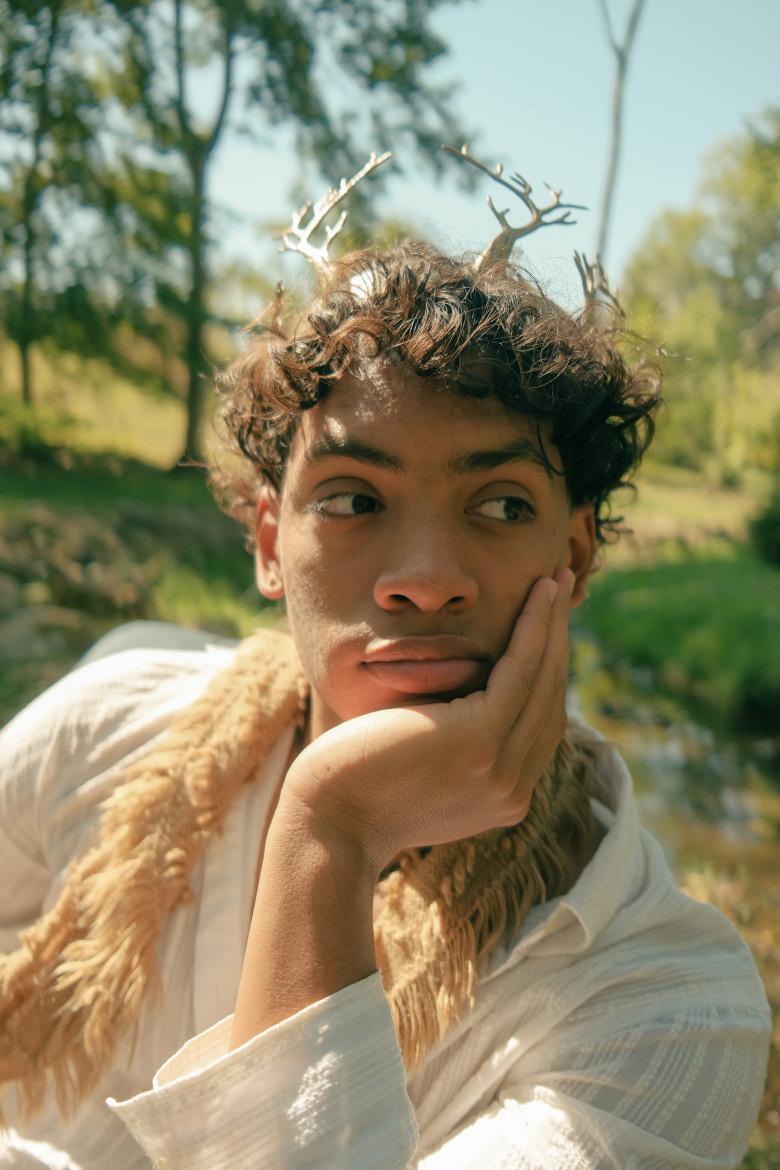
happen? Now the world is telling you to have professional internship experience and strong recommendations to get anywhere out of college. When is it even a good time to start applying? Did anyone teach you what to put on a resume? Slowly the burnout creeps in, and you wish you didn’t complain about all the hard things you had going on three years ago. You start considering your future and remember that dream you had when you were a kid. The city is right there, but how did you get there again?


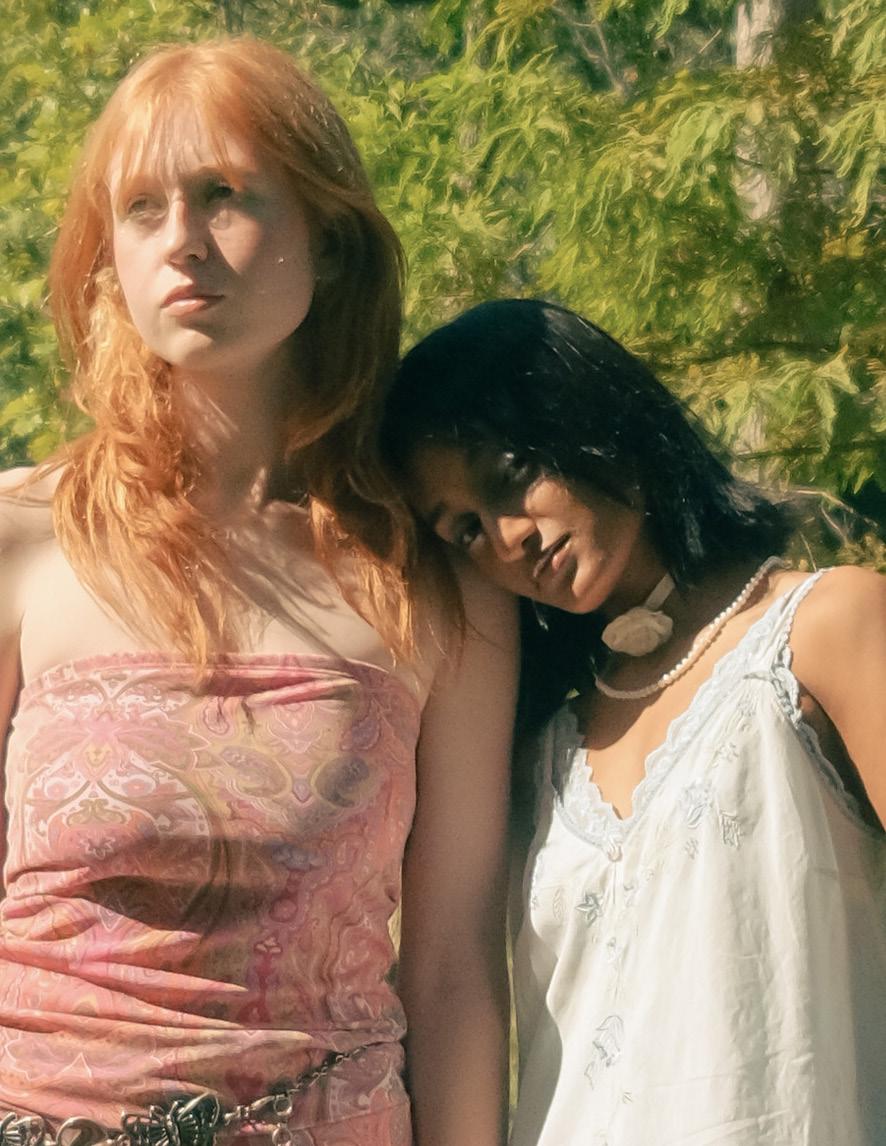


photographed by Maya Solganik
head stylist Katie Kinsella
stylists Ava Schnurer, Sophia Newman, Grace Suieng
modeled by Nolen Duncan, Liberty Strauser, Bathelehem Fish
layout by Emma Brown, Tristan Caudill






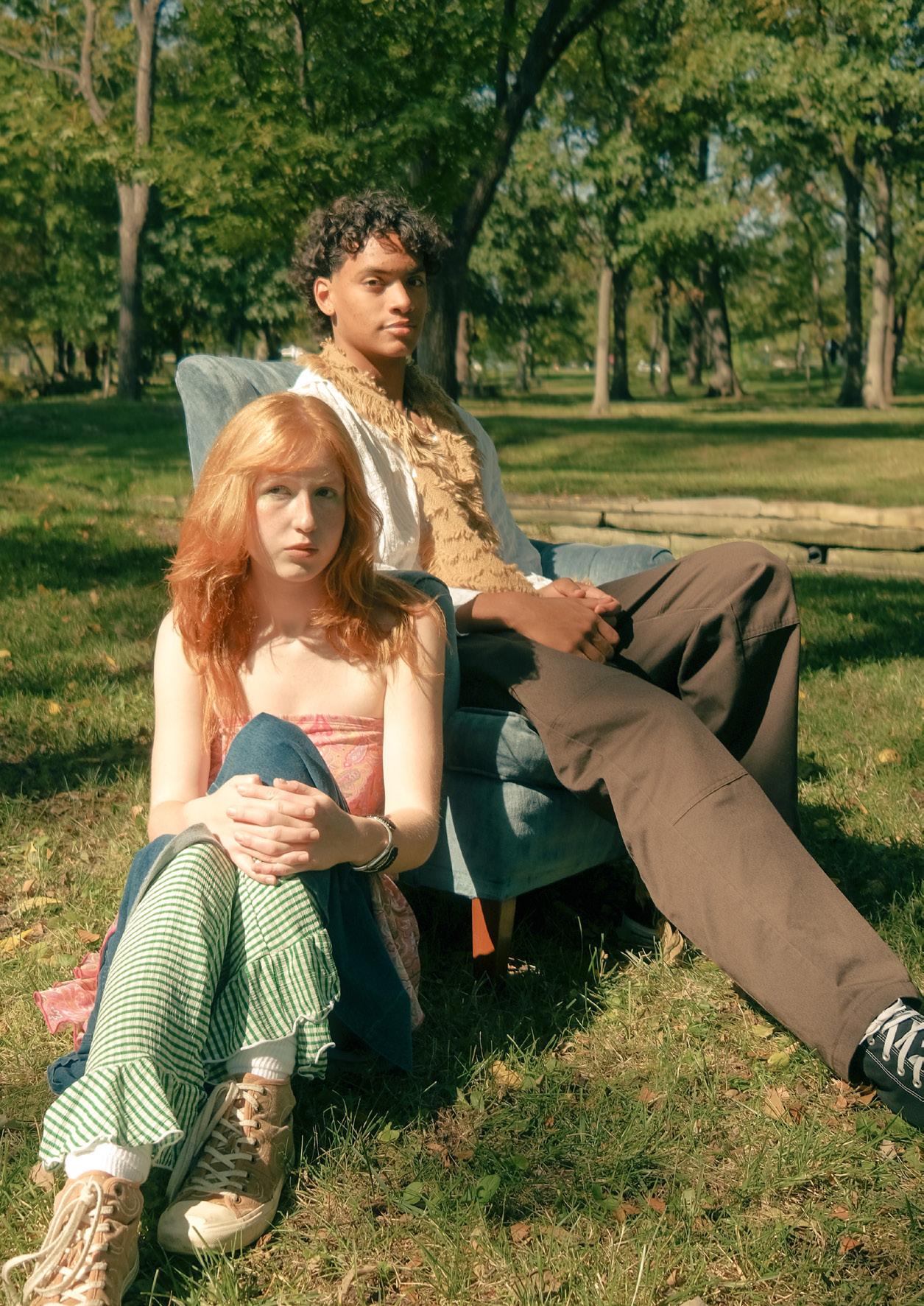
You had your dream job, but what even was it? Now everything seems backwards and scary and stressful and confusing. You fall asleep that night hoping you will wake up back in your childhood bed and it was all just a dream. You hope tomorrow you can roll down the grassy hills in the middle of summer with your childhood friends. To sleep in during a snow day and wake up to hot chocolate with your breakfast. To jump in a giant pile of leaves and destroy the work your parents just finished. You hope to spend time with your siblings while you all still live under the same gabled roof. But the sun rose, and you’re still here. What you would do to be a kid again. Everything has changed.






by Fiona Ko

In the modern age of relentless curation—of flawless social feeds and spotless narratives—the concept of vulnerability has become radical. We often crop, filter, and adjust our lives until they look the way we think they’re supposed to look. And in that process, something essential is lost. It’s no surprise that the world makes it difficult for the imperfect, the hesitant, or the uncertain. Instead, today’s culture tends to favor the opposite: the brave, the flashy, or the loud. It glorifies success, seeing failure as relevant only if it leads to triumph. It tells us that we should look solely forward, evolving into newer, bolder, and better versions of ourselves. Often, struggle is a detail best edited out.
As a cultural voice, midwest emo finds beauty precisely in those awkward, messy, and raw moments of life that frequently are overlooked. It represents an era and a state of mind that values humanity to its full extent: vulnerability, nostalgia, mistakes, and triumphs all woven together in a quiet yet powerful rebellion against perfectionism. It tells us that our past, in all of its awkwardness and uncertainty, still matters. Midwest emo isn’t about making a spectacle of oneself. It’s about existing fully in your skin, even if the rest of the world passes you by. Instead of trying to fit in, it’s
about creating a new narrative—one where the overlooked are seen, their stories are heard, and their emotions are given space to just breathe. It shifts the focus to the small, but significant moments that make up the vast majority of our lives. It gives weight to the experiences that don’t come with applause, but instead, are deeply real, deeply felt, and deeply human.
Midwest emo is about embracing vulnerability, about admitting that we don’t have everything figured out—and that it’s okay. It offers a voice for the kids who grew up in places that the rest of the world overlooks— the small towns, the rural stretches, the forgotten neighborhoods. It’s for those whose stories aren’t written in bright lights but whispered under a burnt-out lamp-post or shared in the silence of an empty room. There is beauty in those hidden and understated moments. The seemingly mundane.
Midwest emo isn’t about making a spectacle of oneself. It’s about existing fully in your skin, even if the rest of the world passes you by.
In a world obsessed with aesthetics, midwest emo creates a space for authenticity. It’s about finding value in the awkward and flawed, the bits of life that don’t fit neatly into a grid. The genre is intimate and raw—its lyrics speak candidly about heartbreak, identity, the struggles of growing up, and the discomfort of not knowing where you belong. It doesn’t shy away from emotions that are seen as weaknesses by society. Instead, it
invites them in, gives them a seat, and lets them be heard. In this sense, midwest emo is a rebellion—an unapologetic rejection of performative perfectionism in favor of something much more human.
Unlike mainstream narratives that glorify loud success, artists like American Football and their lead vocalist, Mike Kinsella, embody vulnerability and imperfection as a form of quiet strength. His lyrics often reflect the struggles of growing up in small, overlooked places— capturing feelings of confusion, nostalgia, and heartbreak with an unfiltered honesty that resonates deeply with listeners. They don’t romanticize life’s highs and lows but offer a space to simply exist within them. In a culture that celebrates moving forward and self-improvement, their music allows listeners to pause and reflect on the messy and primitive moments that rarely make it to the spotlight.
The essence of midwest emo lies in its unapologetic embrace of imperfection, of the deeply human experience that so many other cultural narratives shy away from. In a world that pushes us to strive for perfection, it stands as a quiet rebellion—offering space to exist in the awkward in-between. It’s an anthem for those who don’t fit into the tidy boxes society sets for them, reminding us that our messiness is what makes us real. Midwest emo isn’t about making headlines or being the loudest voice in the room. It’s about the courage to simply be, flaws and all, and finding beauty in the rawness of the human experience. It’s about giving ourselves—and each other—the grace to just be, even if the world doesn’t always understand.





















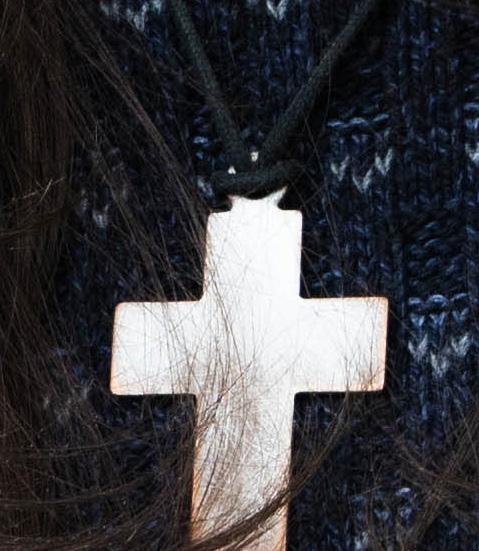

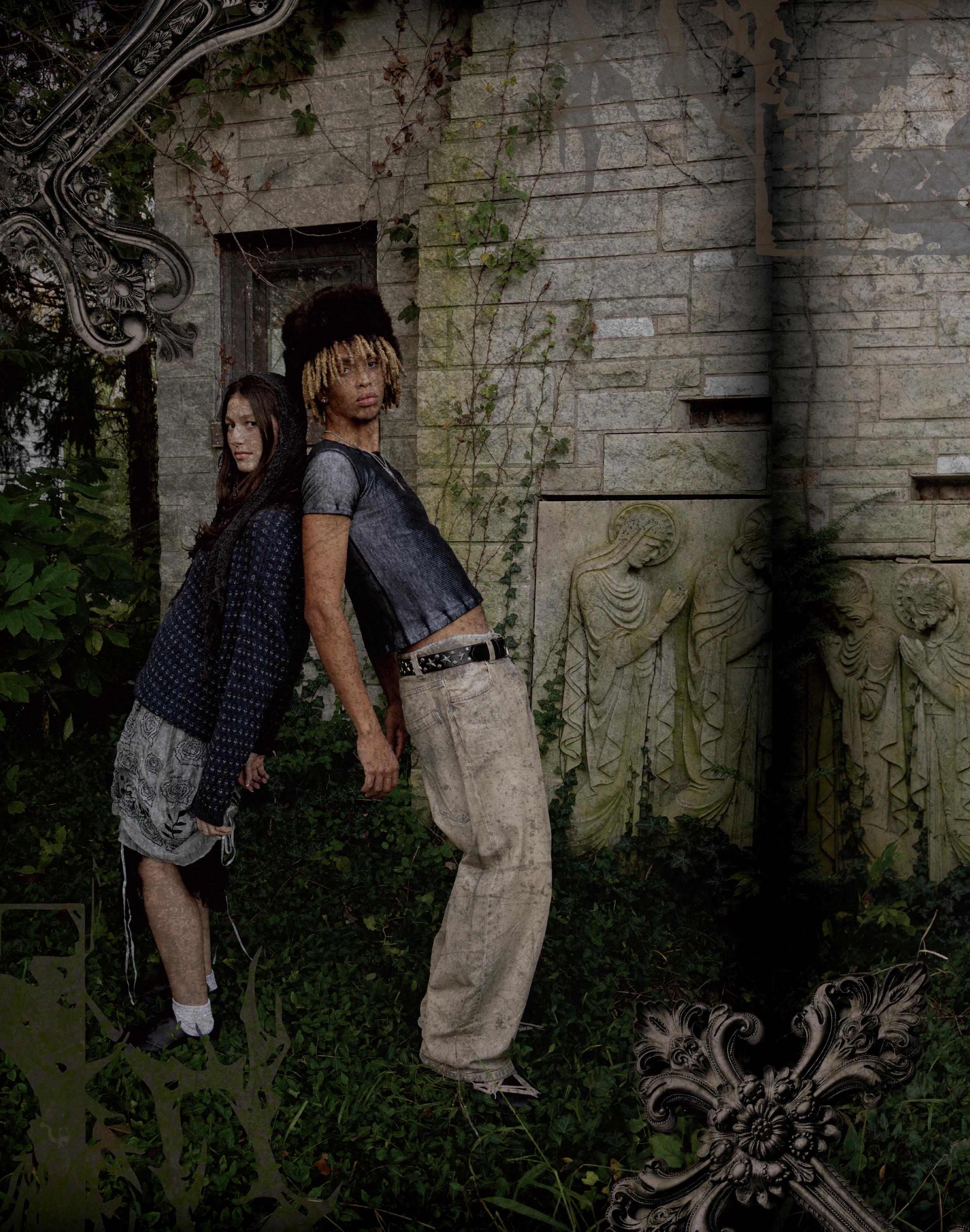

photographed by Darby Williams head stylist Mikey Roselle
stylists Natalia Diaz, Jackson Shinkle, Sammi Zeldin
modeled by Model Names, Model Names layout by Grant Gallaher, Riley Laferriere

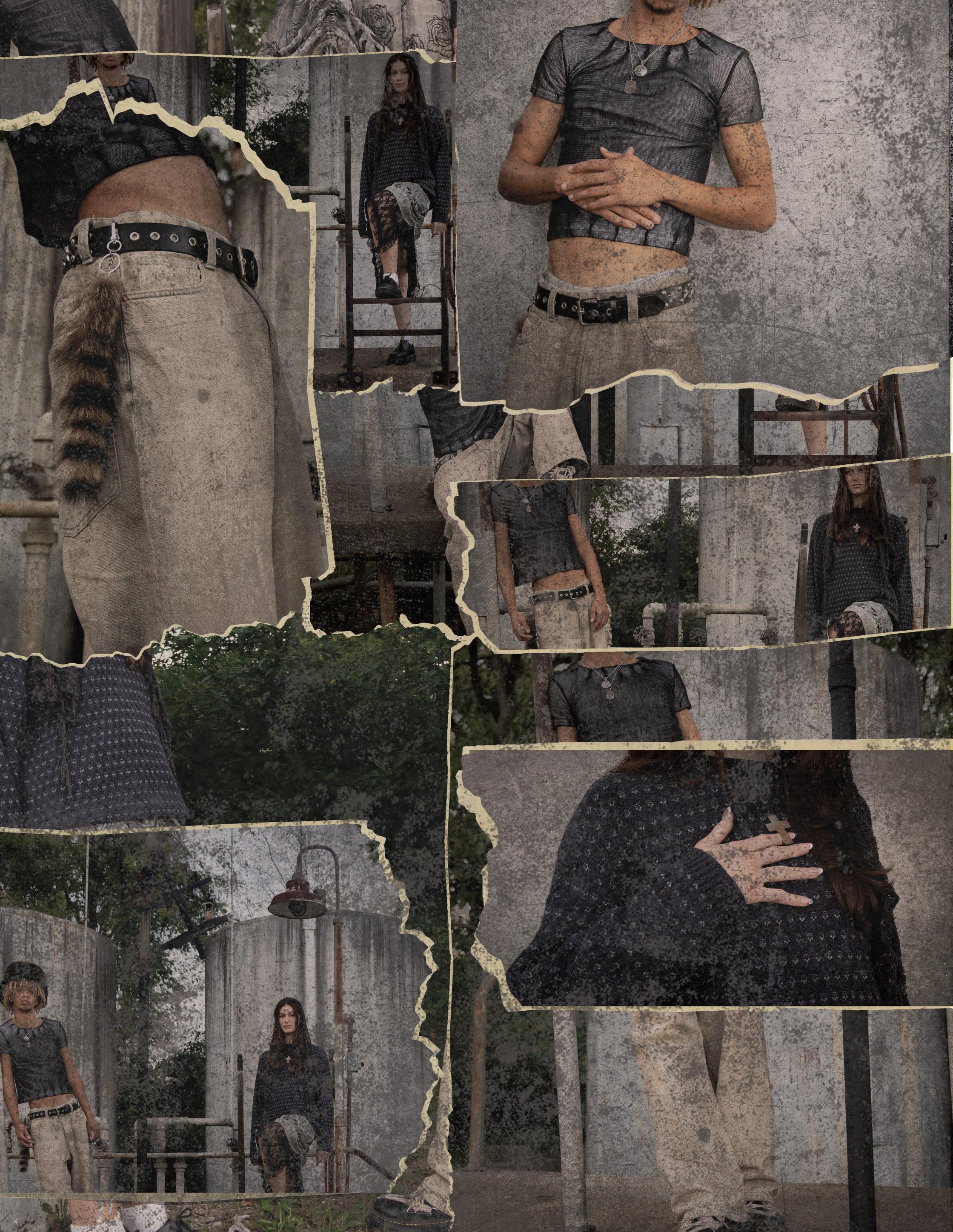



















Midwest emo’s power lies in its ability to be deeply personal and real. It doesn’t glorify or romanticize; it simply lays bare what it means to feel. To grow up in a forgotten place, to feel misunderstood, to search endlessly for meaning. It offers solace to those who, too, find themselves lost in the noise, reminding us that being lost is also part of the journey. As a society, we are conditioned to reject the notion of being lost. We are taught that direction, control, and certainty are the markers of success—that knowing what’s next is a sign of progress. The fear of not knowing, keeping still, or wandering without a clear path is often seen as weakness. It’s
uncomfortable, and just to feel like we are going somewhere, we try forcing ourselves into molds that don’t fit. But what midwest emo understands is that being lost is not a failure. In being fully itself, the genre encourages listeners to do the same—to be honest about their pain, their awkwardness, and their imperfections.
The genre resonates on a deeper level because it speaks to a collective experience. It’s about the identity crisis that accompanies the passage from adolescence into adulthood, the loneliness of existence, and the bittersweet realization that everything, inevitably, changes. The lyrics capture the essence of nostalgia—the desire


to hold on to what’s slipping through our fingers, even when we know it’s impossible. The soft rebellion of midwest emo is found in this nostalgia, in the recognition that our past matters, that our mistakes and our awkward moments are worth cherishing.
It’s about more than just reminiscing— it’s about making peace with the fact that life is a constant flux of highs and lows. It allows for the continuity of nostalgia, reminding us that it’s perfectly human to feel lost or overwhelmed. In a culture that idolizes moving forward and “leveling up,” midwest emo gives us permission to pause, to reflect, and to find meaning in the quiet, in-between moments that make us who we are.








Desire THE DILEMMA OF
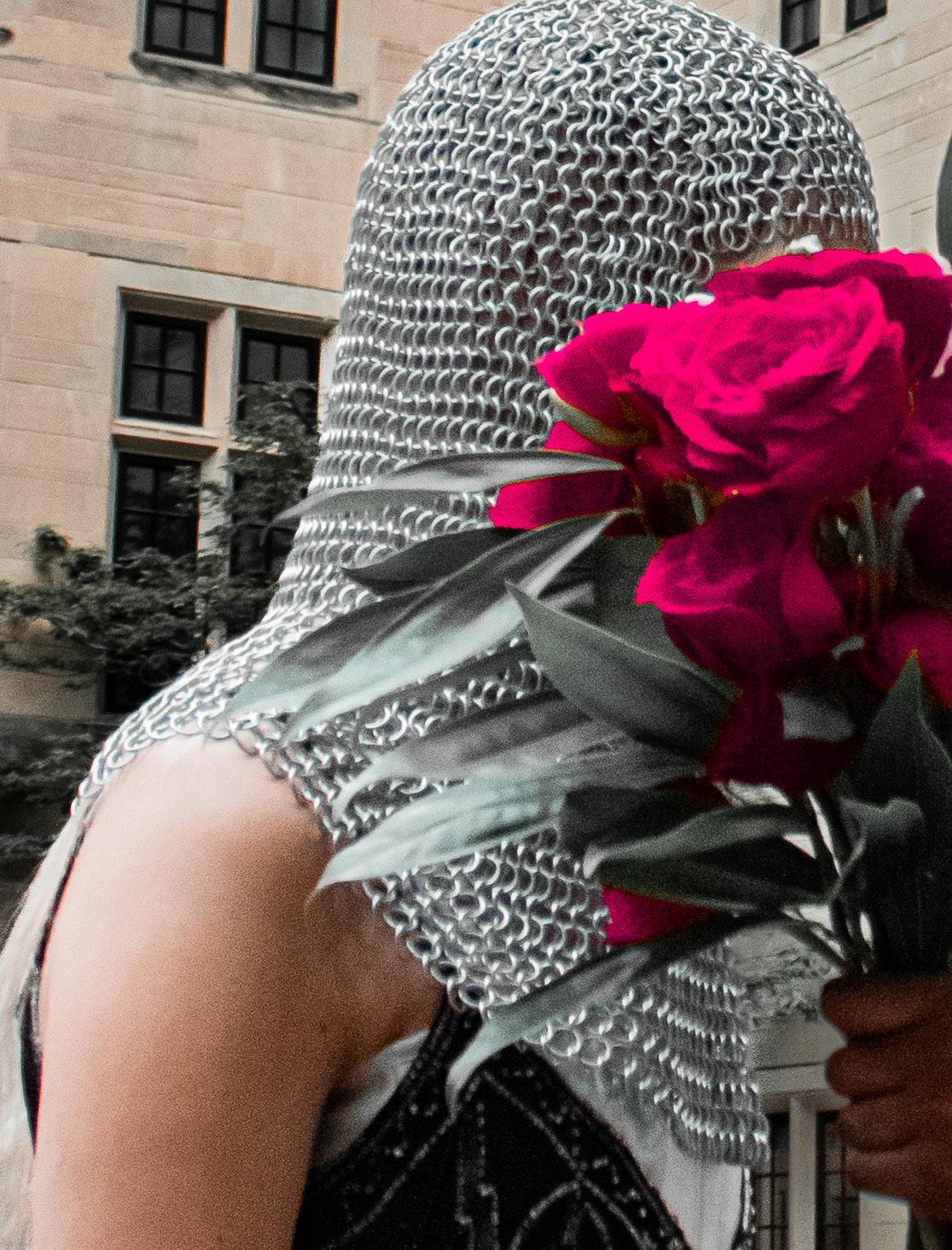
by Kate Kainz
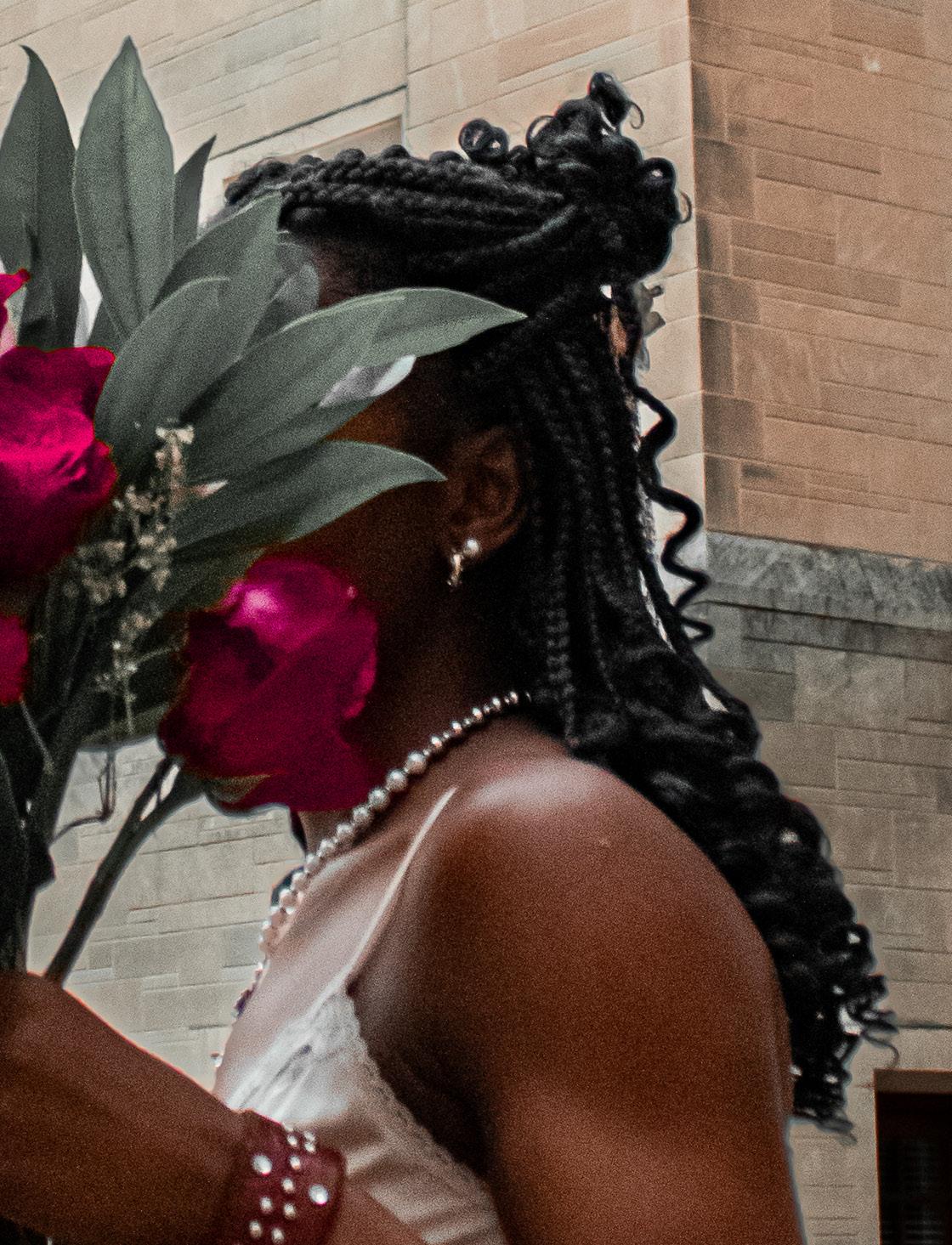
Desire

hus with a kiss I die” were the last words uttered by Romeo Montague in Shakespeare’s Romeo and Juliet, the beloved tragedy of star-crossed lovers. Believing that death was preferable to being without each other, the two adolescents ended their own lives. A rash ending to their rapid, hopeless obsession. Their suicides were ultimately a result of miscommunication, but perhaps their
relationship was doomed from the start. Two naive teens born into longtime feuding families.
Though the melodrama of this age-old tale serves mainly to entertain theatergoers and high school English teachers, it’s hard not to recognize the thematic parallels between the original story and modern day young love. The idea of a “forbidden lover” is not quite so heard of in today’s less stringent

world, yet the search for authority as a young adult when society and kin try to tell you what to believe is no doubt still an ongoing struggle. It’s no surprise that there have been decades of adaptations of the trope in film and literature – we’ve all heard of The Titanic, The Notebook, West Side Story, etc., where love transcends all boundaries. There’s such diversity in today’s possible relationship dynamics yet at the


same time extreme political polarization. It has become more difficult to break away from what we’re accustomed to or even old forms of identity as we grow up and recognize new modes of desire. Particularly in the U.S., the vendetta of the Montagues and Capulets is much like the growing division between liberal and conservative ideology. Many view political associations as a defining factor of compatibility, on top
of other major characteristics like religious beliefs, economic status, and cultural background. It tends to be those closest to us, especially of older generations, who place a great amount of importance on these things. This makes it all the more difficult for younger people to gain the confidence to defy the norms in their realms of influence and declare what they truly want. The mental battle of wanting
to pursue what drives our interest versus appealing to the expectations of those whose opinions we’ve always valued can create a strong cognitive dissonance. Yet, as we gain life experience and build a more consistent idea of what we value independently of family, friends, and society, there still may be a looming doubt of whether we know what’s good for us or not. While many believe Romeo and Juliet
photographed by Mira Carlson head stylist Natalia Kwak stylists Calvin Sung, Jackson Shinkle,Katie Kinsella modeled by Cadence Ast, Sydney Pope layout by Maimouna Nabe, Nitya Shah
is indeed a classic tale of love, others contend that the two were blinded by pure infatuation and lust with one another. After all, they married within twenty four hours of meeting each other. The question of whether attraction to someone is merely an exhilarating, white-hot crush or if it’s an unconditional connection that can be sustained long-term is difficult to answer, especially as most of us are still trying to figure out who we are as individuals. Some may rely on a call of fate, while others may make more calculated decisions, especially if they have more past experience to use as a reference point. Of course, experiencing romantic love for the first time can feel incredibly overwhelming and drive people to drastic and irrational measures.
Even the most introspective people possessing years of wisdom can’t always predict the longevity and health of a romantic relationship. Nobody is truly immune from falling in love with the idea of someone rather than the reality of them – often a process that occurs subconsciously. At that point, only time will tell if one’s attraction to another was just an unfortunate misjudge of their character shaped by intricate ideals they might not even be aware of. This is often why we hear the term “honeymoon phase.” Those first few weeks, months, or even years of a relationship are so easy to see through rose-colored glasses because you’re still getting to know each other on a deeper level and are unaware of subtle differences that can end up being disastrous.
Whether Romeo and Juliet is a cautionary tale about the dangers of romantic idealization or a beautifully somber reflection on how strong love can truly be is up to the interpretation of the observer and has garnered many different analyses over the years. Regardless, finding the balance between self-autonomy in one’s romantic life and distinguishing true love from fleeting desire remains one of the mind’s most complex challenges.

“ONLY TIME WILL tell




FORBIDDEN lovers

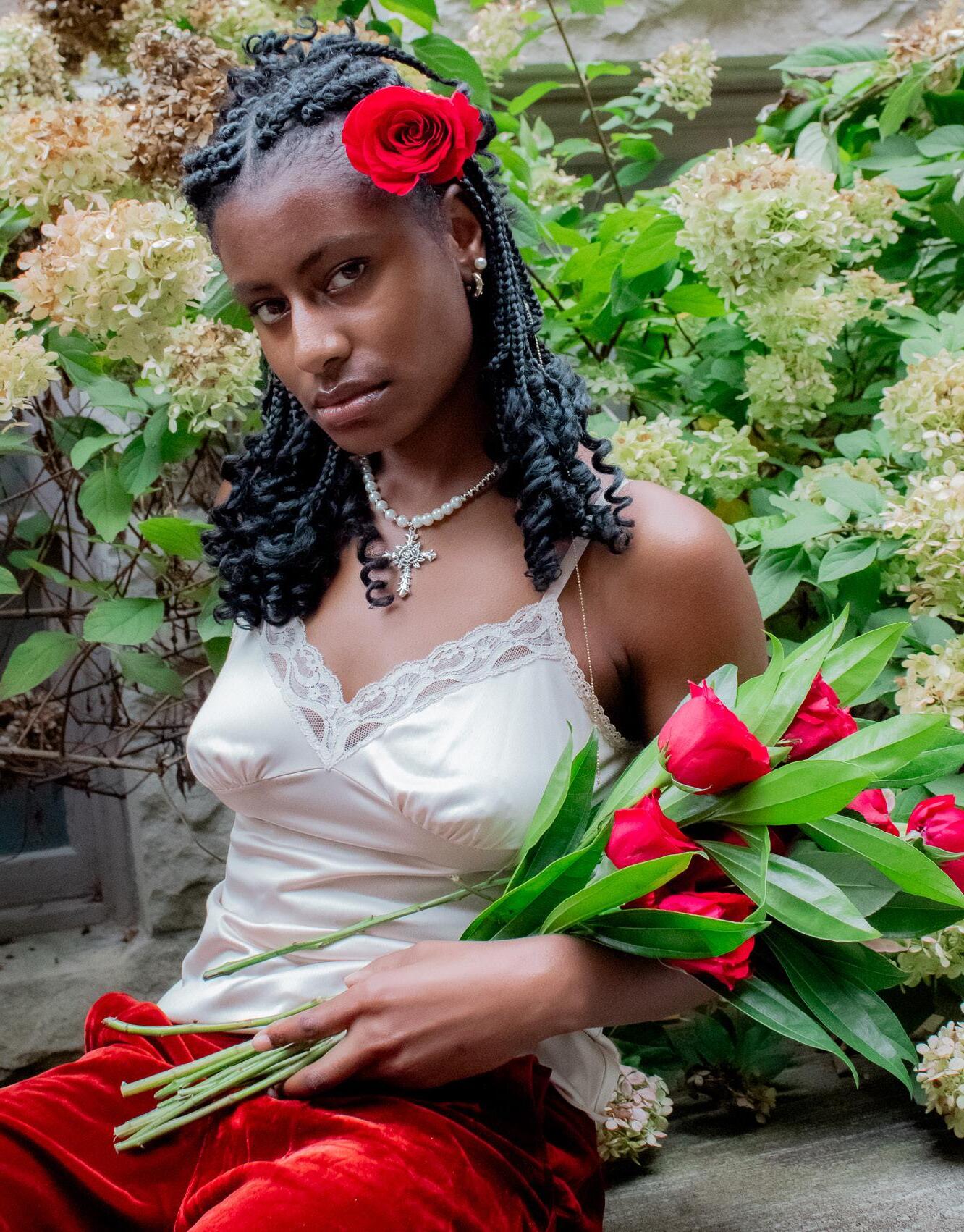
lovers





THUS WITH A KISS I DIE. ”







BEHIND THE CURTAIN
by Eliza McCord and Lainee Kirk




Performing is a known ritual of self-expression that excavates traits long buried by the suffocating weight of societal norms. Art, in its allure, can capture us, flirting with viewers into a trance as they linger before a painting, grappling with the idea that each color may echo the artist’s hidden sorrows. This process allows individuals to manifest their innermost selves in grotesque forms, twisting fashion choices and garish colors into expressions of individuality. Yet, beneath this veneer lies a truth. As performers drop their masks and weave into their roles, they navigate a layer where the line between self and illusion blurs, revealing both the beauty and the scars of their journeys. While escapism offers a fleeting escape from life’s relentless grip, it often leads to a true acceptance of profound
dissatisfaction, where identity is broken fragments, leaving only an emptiness. In the end, the dance between reality and fiction becomes a myth, urging us to confront the discomfort of our existence while seeking solace in artistic expressions that mirror our shared, unspoken despair.
Performing offers a chilling suspension of reality, creating a distorted space where anyone can become anything, unhindered by the suffocating societal norms and expectations that weigh down everyday life. On stage, a performer brutally sheds their identity, transforming into someone else—not merely by playing pretend, but by warping the very essence of who they are, using their pain, happiness, and desires to amplify their new persona until the lines blur
and you can’t tell the difference between the role and the person made for it. This freedom emerges from an acceptance of all the dark and damaged aspects of their being. The jokes they hint at act as a form of self-harm.
The sabotage of the truth becomes addicting to the point where it only stings slightly, a form of coping cutting to the core. The rigid constraints of gender, age, and background dissolve, only to be replaced by baseline attributes that shift like shadows. In this liberation, performers can momentarily escape their struggles and the oppressive spatial pressure of the real world. Yet, this suspension of reality is freeing, offering only a glimpse of relief before they are thrust back into the ruthless truths of a world designed for utilitarianism, where authenticity is sacrificed for conformity.


The true magic—and the deepest scars— lie in the uncomfortable in-between realms of make-believe and harsh reality, where the allure of escape dances with the grim reality of existence.
Escapism can create a peculiar sense of security and openness, where all of life’s problems seem to melt away beneath the shimmering lights, for a moment, they feel truly loved. Yet, the nature of this escape looms ominously, as they know they must eventually return to the harsh grip of reality. Outside, the streets teem with hatred and despair, where drugs and alcohol are peddled as the only real escapes from the suffocating weight of existence. Sexualization becomes the sole expression of desire, drowning out deeper feelings, while the disappointment with reality settles like a heavy fog. With each immersion in these fictional realms, dissatisfaction slowly becomes a normalized state of being, this dissatisfaction is a new default emotion. Escapism can provide solace, but only when one dares to confront the uncomfortable truths of life, a twisted dance between longing and despair that leaves them feeling both liberated and profoundly lost.
The psychological need for escapism often stems from a deep sense of exhaustion and disillusionment with the relentless grind of everyday life. In this bleak landscape, the desire to escape transforms from a mere luxury into a desperate necessity for cultivating selflove and seeking a sense of normalcy. Creatives, those misunderstood souls, are often labeled as freaks to uphold the fragile veneer of social order. This societal confinement of anyone who threatens the binary norm allows traditional, convenient lifestyles to thrive unchallenged. Psychologically, people are drawn to the thrill of the unconventional; being odd becomes a dangerous high that performers must sustain, layering more bizarre aspects onto their personas in an attempt to fit in. Here, creatives may find a resemblance of belonging in a world that relentlessly shuns them, yet this refuge often leaves them feeling more isolated and adrift than ever, trapped in a cycle of despair and longing for connection. Despite the overwhelming tide of selfloathing and the hatred that consumes us, we cannot let go of the love we receive on stage.
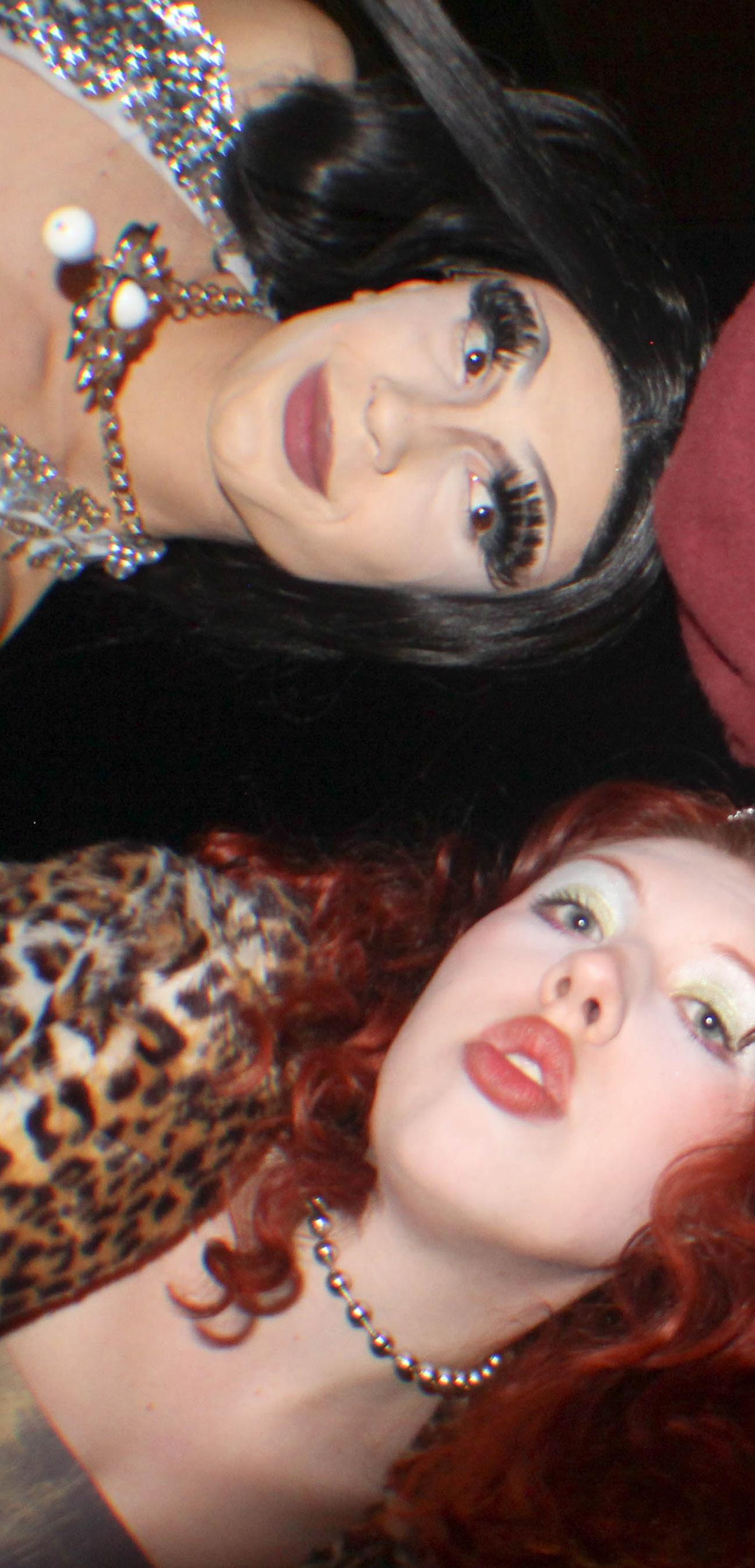





photographed by Alison Irace head stylist Sophia Newman stylists Natalia Diaz, Mikey Roselle, Sammi Zeldin
modeled by Anna Bohman, Jackie Can, Aleksandra McKee, Henry Waddell IV
layout by Tristan Caudill, Riley Laferriere
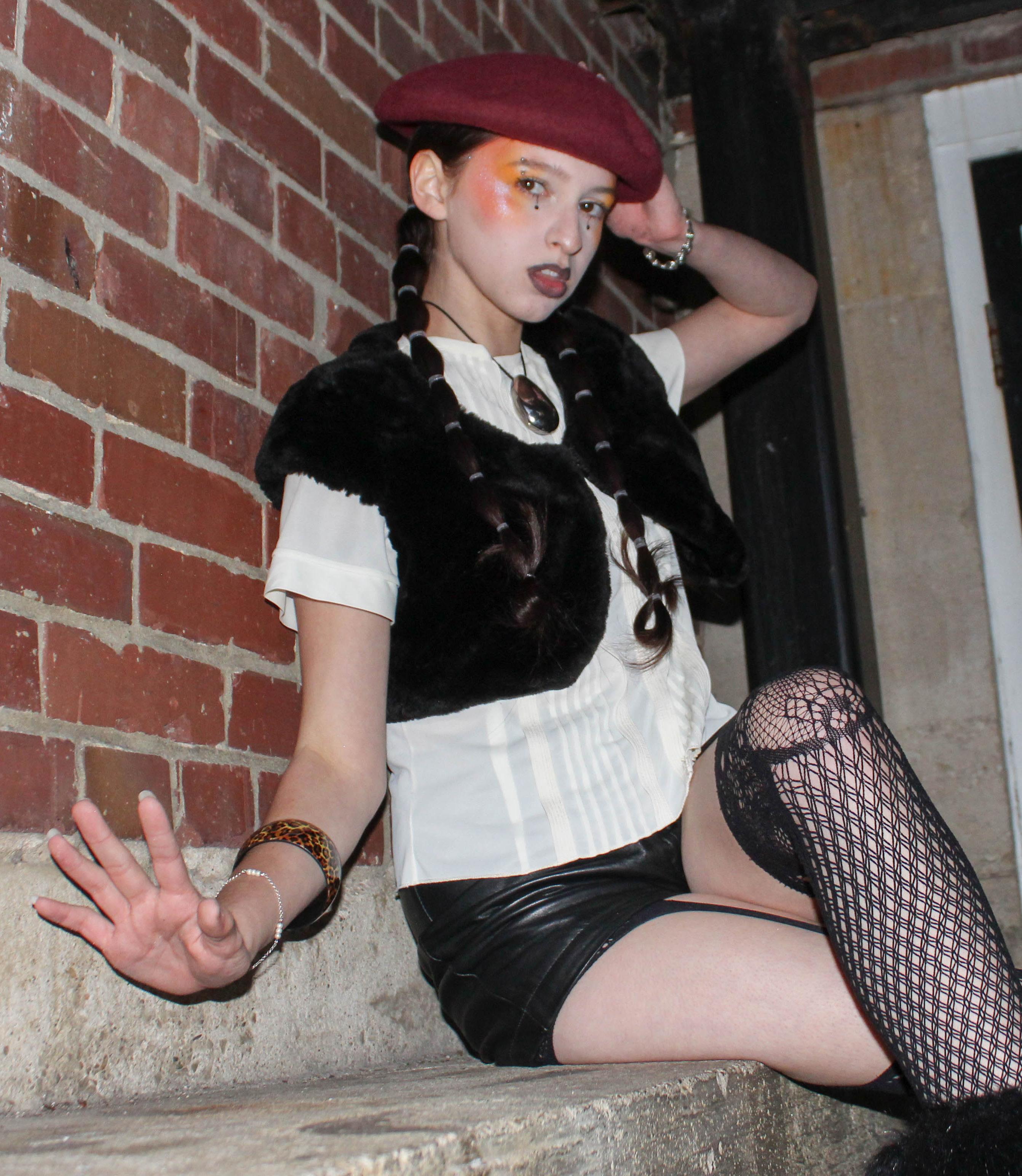



In 1984, Michael Alig left the midwestern charm of South Bend, Indiana to unleash his creative potential in the underground club scene onNew York City. After living in NYC for a while, Alig settled onto a path that would bring him infamy and spark an aesthetic wave. Soon from the NYC underground rose the ‘club kids’, a group of partiers that created not only a scene, but a movement. Paving the way was Alig and his new friend/rival, James St. James.
Fully painted faces, decadent patterns, and layers upon layers are some of the ways the club kids expressed their unique sense. Their looks were passionately DIY and transcended being just an outfit, instead something that transformed them into moving pieces of art. Every night was a new aesthetic and nothing was off-limits from carnival clown divas to slutty cyberpunk aliens.
Clubs like Limelight and The Shelter were taken over by the energy of the club kids and provided their electrifying soundtrack. They weren’t limited to venues, however, and often brought their techno trance music to the NYC streets with pop-up dance parties and shows.
With a rising dominance of conservative ideology and the peaking AIDS crisis in the late 80’s, people looked to the night scene as a form of escapism. Choosing an outfit was not just a simple task, but a way to express themselves despite personal plights. Under the
club lights, people used their style and aesthetic to transform negativity into art.
People talked about the club kids as a group that seemed to be in a world of their own, liberated from ours. In a way, they were because of partying and drug use that seemed to separate some people from others. Yet, the club kids were inextricably tied to the reality of their time and their expression functions as a response to the happenings of that era.
The group stuck out as being a safe haven for queer acceptance. The fashion of the club kids existed outside of typical gender binaries, as did they. They crafted their art as something that could exist without boundaries or labels. The club kids weren’t just in it for the nights of partying, in the midst of the AIDS crisis, queer people sought solace amongst each other. They created a space devoted to their expression and connection through art, fashion, music, etc.
Today, the club kids are icons for their inventive looks and personas that conquered the club scene for a period of time. On season 9 of RuPaul’s Drag Race, the queens were tasked to dress up as the category ‘club kid’, paying homage to RuPaul’s roots in the scene. RuPaul became a part of the club kids scene as an emcee, performer, and frequent partier. Influences of this era are still seen in modern drag with queens like Sasha Velour, Shea Coulee, and Violet Chachki.


THE YEAR OF THE SNAKE
by Lida Kim

蛇年 (shé nián).
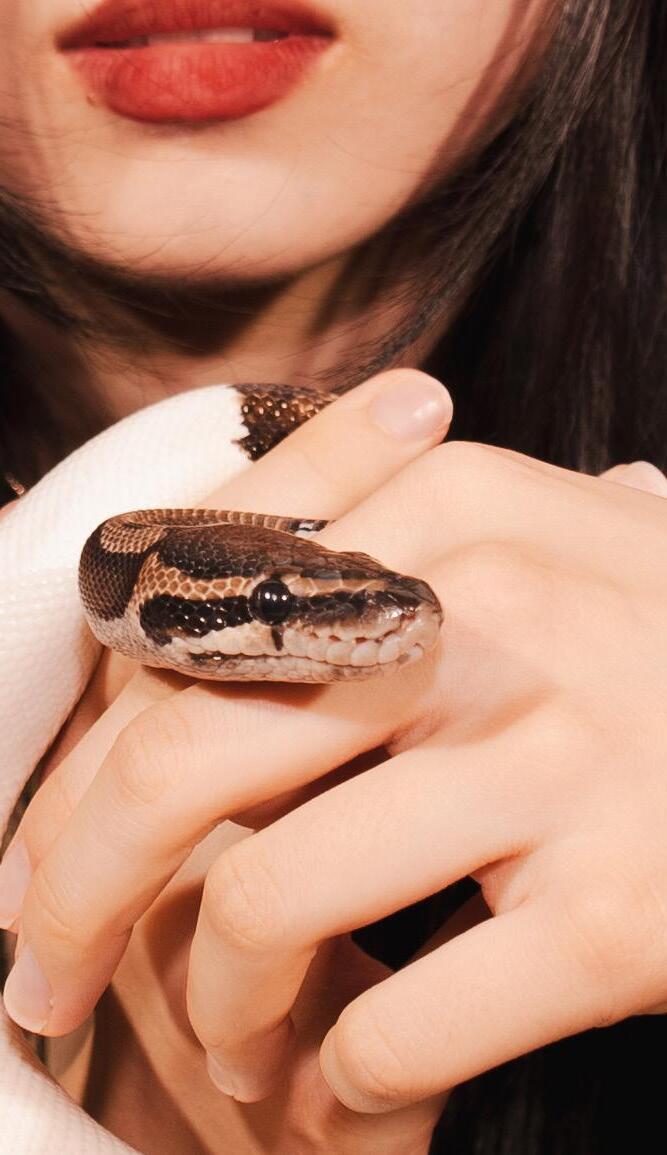
In many Asian cultures, the snake symbolizes wisdom and prosperity, but in Western tales, it often embodies deceit and temptation. This cultural contrast mirrors how Asian women are perceived: either as the shy and submissive “lotus blossom,” or the exotic and intimidating “dragon lady.” Like the snake, Asian women are reduced to a binary that leaves little room for individuality. Trapped between extremes, we navigate the duality of being seen as “too soft” to be taken seriously or “too intense” to be trusted.
Although Western media has begun to portray Asians in more nuanced ways, many stereotypes persist. Growing up, I noticed that the only Asian representation on screen largely fit into limited archetypes. In almost every children’s show I watched, Asian characters were depicted as nerdy, shy, smart, and quiet, serving mainly as comedic relief with dialogue focused on getting good grades and fearing their scary parents. These stereotypes don’t just exist on screen; they permeate our everyday lives, with peers assuming we excel in math or that we work tirelessly only to fulfill our parents’ dreams. In reality, Asians are a diverse group with varied goals, career paths, and family dynamics, each shaped by unique cultural backgrounds and experiences that defy such narrow assumptions. The model minority myth represents the most common stereotypical view of Asians. It not only overlooks the diversity within Asian communities but also perpetuates harmful narratives, pitting minority groups against each other, while downplaying racism as a whole.
Stemming from a long history of sexualization, the “lotus blossom” stereotype upholds an idealized view of Asian women under the male gaze— depicting them as feminine, delicate, well-behaved, and inherently compliant. This stereotype is especially harmful in romantic contexts, where non-Asian men often fetishize Asian women as docile partners who lack agency and independence—a fantasy that aligns with Western ideals of innocence and subservience. In educational and professional settings, the image of compliance limits their potential, with employers often overlooking their leadership capabilities or assigning them extra responsibilities without adequate compensation.


The Chinese zodiac cycle is a 12-year repeating cycle, with each year represented by an animal that influences the personalities and fates of those born in that year. The symbol representing the Snake in the Chinese zodiac is “巳”, which is pronounced “sì.”
The last Year of the Snake occured in 2013 and the next will begin on January 29th, 2025.


The Snake is known for its wisdom, charm, and deep thinking. People born under this sign are often seen as intuitive and enigmatic.



















Those born in the Year of the Snake are believed to be graceful and elegant, with an eye for beauty and refinement in both style and behavior. The Snake’s complex nature makes them captivating and alluring, embodying both strength and sensitivity in a way that leaves a lasting impression on those around them.
Caught between conforming to these expectations and asserting their true personalities, Asian women are faced with a dilemma. This narrow view limits the potential of their full range talents and personalities, but if they take initiative, they risk their action being perceived as overly aggressive or out of character.
While the “lotus blossom” trope paints Asian women as delicate and submissive, another equally pervasive stereotype—the “dragon lady” trope— casts them as powerful, cunning, and intimidating. Originating from Western fears of East and Southeast Asia as “mysterious” and “dangerous,” this trope often frames Asian women as villains or temptresses in the media. When women of color voice their opinions and stand up for themselves, they are viewed as more threatening and aggressive than their white peers. Asian and Latina women, in particular, face sexualized stereotypes, with the “spicy Latina” and “dragon lady” tropes frequently exoticizing their perceived aggression.
In social contexts, the “dragon lady” trope portrays Asian women as unapproachable and intimidating, reinforcing the “tiger mom” image of ruthless ambition. Although it may seem like a mere TV trope that is easily differentiated from reality, it manifests in everyday interactions. From media portrayals to workplaces and schools, Asian women are viewed as ruthlessly competitive. When we strive to become valedictorian, first-chair violinist, or aim for a promotion, it’s often misconstrued as a willingness to push others aside or do anything to reach the top. This perception is echoed in constant TV portrayals of Asian women as “evil” husband-stealing mistresses, further reducing us to harmful stereotypes that ignore the diversity of our ambitions.

The Snake is associated with mystery and transformation, symbolizing shedding old skins to embrace new beginnings and personal growth.



photographed by Grace Gua head stylist Emily Siefker stylists Anna Boivard, Grace Suiaung modeled by Laura Kim, Jen Wang layout by Mabel Dow, Mollie Habig


